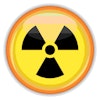The same aerospace technology that images distant stars and galaxies could prove equally adept at pinpointing the early stages of breast cancer. OmniCorder of Stony Brook, NY, recently received 510(k) clearance from the Food and Drug Administration for BioScan, a thermal imaging system that tracks blood perfusion.
The company will market BioScan as an adjunctive tool to traditional mammography.
"Our focus has been on trying to bring new tools to the environment to detect breast cancer more accurately, to augment the dominant technology out there, which is x-ray," said Mark Fauci, president of OmniCorder. "This also could be useful as a tool for imaging women who don't necessarily indicate for x-ray mammography," such as younger patients with dense breasts.
BioScan uses dynamic area telethermometry (DAT), an infrared technology that OmniCorder has licensed from Lockheed Martin and NASA's Jet Propulsion Laboratory in Pasadena, CA. DAT works by tracking the temperature of blood as it flows into an area of the body. Normal flow is indicated by very small changes in temperature, Fauci explained. But breast cancer cells produce nitric oxide, which can cause the temperature to remain static.
"We can measure temperature with a resolution of .01 degree centigrade. We acquire 100 frames per second and we can see modulations in surface temperature that appear to be from warmed blood at each heat beat and autonomic vasoconstriction," said Dr. Terry Button, director of the MRI Research Center and an associate professor at the State University of New York at Stony Brook. The university's Carol Baldwin Breast Cancer Center is one of two sites where BioScan preliminary trials are in progress.
About 109 women have been screened with BioScan at Stony Brook. Button said that his institution, along with the State University of New York at Buffalo, plans to have a double-blind trial underway by March. Patients underwent DAT testing just before a biopsy. Good agreement was found between the biopsy and DAT results, Button said. Tolerance of DAT screening was positive because the procedure is noninvasive, he added.
But whether heat-based imaging has a definite place in breast screening is still under discussion. In a 1998 paper published in the Canadian Medical Academy Journal, a team of radiation oncologists devised a list of breast cancer screening guidelines in which they questioned the value of thermal imaging (CAMJ 1998, Feb. 10, Vol. 158, Supp. 3, pp.S3-8).
Based on thermography tests conducted in the late 1970s and early '80s by the National Cancer Institute, the group from the Canadian Association of Radiation Oncologists concluded "there is no role for this technique at present outside structured clinical trials involving the testing of improved technology." A year later, lead author Dr. Richard Margolese, director of surgical oncology at Jewish General Hospital in Montreal, said he is still not convinced of the value of thermal breast imaging.
That hasn't stopped other companies from working on thermal imaging systems: In December 1999, Computerized Thermal Imaging of Layton, UT, received FDA premarket approval for the first phase of its breast cancer detection system. The CTI system uses a heat-sensitive camera to record thermal images of breast tissue. The images are processed by computer algorithms.
However, Fauci said he considers OmniCorder technology to be superior to its competitors. Other companies manufacture infrared equipment for other medical uses: Inframetrics of Portland, OR, for example, has a range of cameras for thermal imaging of cardiac bypass and burn trauma.
"We're not just taking a snapshot of the lesion. (BioScan) is collecting 100 to 200 images per second," Fauci said. "There's a difference between producing pictures of hotspots and capturing 200 images that measure the oscillations that occur during blood flow. Companies like CTI are using old technology and methods."
Dave Packer, president of CTI, refuted that claim, describing the CTI system as more complex.
"Our system is much more extensive than theirs," he said. "We also have 510(k) approval for our computerized camera, but that's just one part of our system. We elected to go the more rigorous (premarket approval) route." Packer added that CTI expects to finish up the PMA review process by the end of 2000.
In addition to Stony Brook, BioScan trials to gather preliminary data are set to take place at Memorial Sloan-Kettering Cancer Center and the Strang Cancer Prevention Center, both in New York City.
By Shalmali Pal
AuntMinnie.com staff writer
January 27, 2000
Copyright © 2000 AuntMinnie.com















